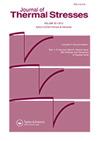藻类多糖(卡拉胶和海藻酸盐)-抗病毒化合物的宝库:一种识别抑制SARS-CoV2 S1-RBD刺突蛋白的潜在候选物的计算机方法
IF 2.3
3区 工程技术
Q2 MECHANICS
引用次数: 0
摘要
在过去三年中,世界面临着严重急性呼吸系统综合征冠状病毒2 (SARS-CoV-2)大流行的意外传播。高死亡率和不断变化的病毒形态是有效管理SARS-CoV-2的挑战因素。然而,在过去三年中,研究界在开发疫苗和一定程度上控制大流行的传播方面取得了重大进展。这些疫苗含有减毒病原体,在接种后并没有杀死病毒,而是通过增强大流行暴露期间的免疫系统反应来保护人类。然而,合成疫苗的副作用和高昂的成本一直是研究人员、消费者和政府关注的问题。因此,作为合成药物的替代品,天然药物或天然植物产品引起了研究人员的兴趣。藻类被认为是生物活性化合物的宝库,如类胡萝卜素、维生素、多糖、蛋白质等。这些生物活性化合物已被充分证明可用于治疗各种人类疾病,如癌症和心血管疾病。此外,硫酸酸化多糖如海藻酸盐和卡拉胶已被报道为具有抗病毒和免疫调节特性。因此,本文就藻类多糖,特别是海藻酸盐和卡拉胶及其在COVID-19治疗中的应用进行综述。此外,本文还讨论了抑制SARS-CoV-2附着于宿主受体ACE2(血管紧张素转换酶2)的S1-RBD(受体结合域)的方法,并探讨了其与相关蛋白网络的相互作用,这将有助于药物发现和药物设计。本文章由计算机程序翻译,如有差异,请以英文原文为准。
Algae Polysaccharides (Carrageenan and Alginate)—A Treasure-Trove of Antiviral Compounds: An In Silico Approach to Identify Potential Candidates for Inhibition of S1-RBD Spike Protein of SARS-CoV2
For the last three years, the world has faced the unexpected spread of the pandemic of Severe Acute Respiratory Syndrome Coronavirus 2 (SARS-CoV-2). The high mortality rate and ever-changing shape of the virus are the challenging factors in the effective management of SARS-CoV-2. However, in last three years, research communities have made significant progress in developing vaccines and controlling the spread of the pandemic to a certain extent. These vaccines contain the attenuated pathogens, which after application did not kill the virus but protected the human by enhancing the immune system response during pandemic exposure. However, the negative side effects and the high cost of the synthetic vaccines are always of concern for researchers, consumers, and the government. Therefore, as an alternative to synthetic drugs, natural medicines or natural plant products have piqued researchers’ interest. Algae are considered as a treasure house of bioactive compounds such as carotenoids, vitamins, polysaccharides, proteins, etc. These bioactive compounds have been well documented for the treatments of various human ailments such as cancer and cardiovascular diseases. Furthermore, sulfated polysaccharides such as alginate and carrageenan have been reported as having antiviral and immunomodulating properties. Therefore, this review addresses algal polysaccharides, especially alginate and carrageenan, and their application in the treatment of COVID-19. In addition, in silico approaches are discussed for the inhibition of the S1-RBD (receptor-binding domain) of SARS-CoV-2, which attaches to the host receptor ACE2 (angiotensin-converting enzyme 2), and the interaction with the network of relative proteins is also explored, which will help in drug discovery and drug design.
求助全文
通过发布文献求助,成功后即可免费获取论文全文。
去求助
来源期刊

Journal of Thermal Stresses
工程技术-力学
CiteScore
5.20
自引率
7.10%
发文量
58
审稿时长
3 months
期刊介绍:
The first international journal devoted exclusively to the subject, Journal of Thermal Stresses publishes refereed articles on the theoretical and industrial applications of thermal stresses. Intended as a forum for those engaged in analytic as well as experimental research, this monthly journal includes papers on mathematical and practical applications. Emphasis is placed on new developments in thermoelasticity, thermoplasticity, and theory and applications of thermal stresses. Papers on experimental methods and on numerical methods, including finite element methods, are also published.
 求助内容:
求助内容: 应助结果提醒方式:
应助结果提醒方式:


